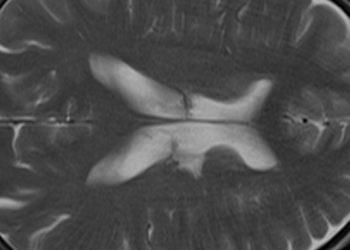Oseltamivir treats avian flu early
Image: CC
Key study points:
- Treatment of Influenza A H5N1 with oseltamivir within 2 days of symptom onset was associated with lower rates of mortality.
- Children less than 5 years of age had significantly lower rates of mortality than older patients infected with H5N1.
Primer: Avian Influenza A H5N1 circulates primarily in birds, but can cause human disease with significantly high mortality. Cases of H5N1 infection occur sporadically and have been reported in China, Southeast Asia, Indonesia, the Middle East, Africa and Europe. To date no cases have been reported in the United States. Direct avian-to-human transmission appears to be the predominant means of transmission.
Though H5N1 vaccines have been in development, the rarity of infections has hindered efforts to study their efficacy. Therefore, large-scale vaccination efforts have not been implemented.
Treatment with the neuraminidase inhibitor oseltamivir is the mainstay of therapy for H5N1 infection, though evidence is based entirely on case studies and uncontrolled clinical trials. Additionally, oseltamivir treatment appears to yield significant variability in clinical outcome. Likely factors affecting outcome with treatment of oseltamivir include viral clade (hemagglutinin variant or strain), age, time before treatment, hospitalization and respiratory failure. This study examined factors impacting mortality in patients with H5N1 infection being treated with oseltamivir.
Background reading:
3. Adams S, Sandrock C. Avian influenza: update. Med Princ Pract. 2010;19(6):421-32. Epub 2010 Sep 28.
This [retrospective cohort] study by Chan et. al. examined data from the Global Avian Influenza Registry, a database created in 2006 to collect systematic information on human cases of H5N1 infection.
Of the 407 laboratory-confirmed cases of H5N1 infection, 229 patients had received oseltamivir treatment. Patients who received additional antivirals, and/or suboptimal doses of oseltamivir were excluded, yielding 215 patients in the study. Patients were then categorized by age, and then analyzed for factors including viral clade, additional therapy (including steroids and antibiotics), time until treatment, and respiratory failure. The primary outcome for the study was death.
The viral clade with the highest case fatality rate (CFR) was 2.1 circulating in Indonesia (85% of patients died). There was no significant difference in survival between sexes, but children less than 5 years of age had lower fatality rates than older patients. Additionally, patients who received treatment in less than two days after symptom onset had lower fatality rates than patents who received treatment later (18% vs. 62% respectively). Antibiotics did not appear to affect survival, though patients who received steroids died more often. When predictors of fatality were examined with multivariate analysis, viral clade, absence of respiratory failure and treatment within 2 days of symptom onset most strongly predicted survival.
In sum: This study provided support for the treatment of Avian Influenza H5N1 with oseltamivir and additionally provided insight that may affect guidelines for treatment. According to the study, early treatment initiated within 2 days of symptom onset provided a significant survival benefit. The result that children also had a survival benefit is interesting, and possibly explained by their inability to mount an inflammatory response severe enough to cause fulminant respiratory failure. The variability in viral clade should be studied further as it is not yet clear if different clades cause greater mortality at baseline, or if the geographic location, which would affect access to and quality of care, is confounding the results. Additionally, the fact that steroids were associated with higher mortality is noteworthy, but may be confounded by the fact that only patients with severe disease received steroids as a last-ditch treatment option.
Click to read the study in Journal of Infectious Disease
By [AS] and [MP]
© 2012 2minutemedicine.com. All rights reserved. No works may be reproduced without written consent from 2minutemedicine.com. DISCLAIMER: Posts are not medical advice and are not intended as such. Please see a healthcare professional if you seek medical advice.





